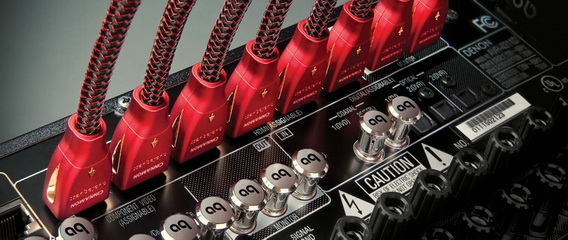Imagine a football team without a quarterback. The games wouldn’t go very smoothly, nor be very entertaining. In your home-entertainment system, the AV receiver is the quarterback, directing the audio to the appropriate speakers, the video to the display(s) and performing a host of other functions like amplifying your sound and playing streamed music. In fact, the receiver is probably the most important piece of audio equipment in your system. It’s also the most complex.
What you need now…and later
First, you need to know what functionality your receiver needs now. At the very least, you should have enough HDMI inputs to handle all your sources. Make sure you have your “legacy” gear covered, too. For example, if you have a turntable, you’ll need a phono input. In addition, your receiver needs enough surround channels to get power and sound to all your speakers. A 5.1-channel receiver has outputs for five speakers plus a subwoofer (it’s the “.1” in the “5.1”). A 7.1 receiver has connections for seven speakers plus a subwoofer, and a 9.2 or 10.2 receiver has space for nine or 10 speakers plus two subwoofers. Generally, the more speakers, the more immersive the surround experience.
From here, you need to decide your future needs, allowing your receiver to remain relevant for years to come. For example, are there HDMI inputs to spare should you want to add a source later? HDMI 1.4 is the latest standard. In addition to audio and video, it includes an Ethernet channel, eliminating the need for a separate Ethernet cable and making connecting easier for all your home-entertainment components. HDMI 1.4 also will accommodate 4K Ultra High-Def TV (the latest video technology that is four times the resolution of high-def). If 4K is something that you plan on adding in the not-too-distant future, then shop for receivers with 4K compatibility and/or up-scaling.
What’s with all the logos?
Most of the logos you’ll find on the front of your receiver indicate surround-sound-decoding technology. Here’s a quick rundown: Dolby® Digital Plus is designed for evolving media from devices like a smart phone, while Dolby® TrueHD is designed for high-def audio from sources like Blu-ray, reproducing the soundtrack bit for bit for incredible audio. We love the Dolby® Volume technology, which keeps volume at a constant level so that you won’t have to endure that sudden audio blast when a commercial comes on. Dolby® ProLogic® IIx turns 5.1 channels of soundtrack into 6.1 or 7.1 channels for more immersive surround.
On the DTS side of things, look for DTS-HD® Master Audio™ and DTS Digital Surround™, or the 11.1-channel format DTS Neo:X™. Many receivers are certified by THX®, which means that the receiver has been developed in conjunction with THX to its audio standards. This designation is definitely a bonus and gives many consumers peace of mind.
Zoning out
If you want to send music and video from one set of sources around your home, you need a multi-zone receiver. Each zone is, simply, a location where your receiver will deliver audio and/or video and eliminates the need for a separate receiver in each room. Most receivers are pretty flexible in this regard. For example, a 7.1 system can be configured as a 5.1 system with the unused two channels being sent to a second zone. Video can also be routed to other zones, you just need dedicated HDMI outputs for each zone. Before you shop, get an idea of how many zones you want to ensure your receiver has you covered.
Media mavens
More and more, receivers are tasked with handling all your various media. Onboard services will include satellite radio (SiriusXM) and standard popular online services such as Internet radio (Pandora®), Netflix™, Vudu™ and YouTube™. Apple AirPlay® is a must for iPad®/iPhone® users, allowing you to stream content from your iOS devices with ease.
What’s the wattage?
Finally, your receiver needs ample wattage to power your speakers. If you like to crank it loud, have a big room or have hefty speakers, err on the side of more power. The last thing you want is underpowered speakers, which can distort. Check your speaker’s specifications to see how much power they require, and also check their sensitivity rating. Speakers with higher sensitivities require more power.
The receiver is one of the most flexible and forward-thinking components in your system, and it’s important to give it a little thought so that you get the most out of it both now and in the future. Rest assured that we are here to help guide you through these complexities and will help you pick a unit that is right for you. Call us or come in and we’ll make it easy.

